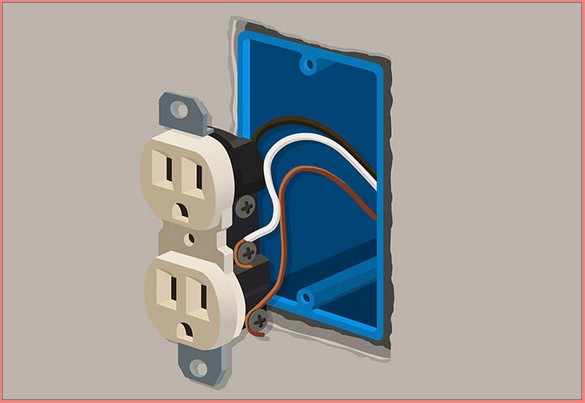The process of getting an old electrical outlet out of your home in favor of a new one might sound intimidating but it doesn’t really have to be that way. You just have to use the right steps for doing so. You’ll also have to review the types of outlets that you can use in order to fix the problem.

When Should You Replace It?
You need to replace the electrical outlet in your home at the right time. Here are some instances of when you might have to replace your outlet:
a) If the cord in an outlet can’t stay in place then you need to replace it.
b) If you see any slight dark spots that came from sparks around the outlet then it should be replaced.
c) You can also replace your outlet if you find that the screws supporting it are coming out easily.
d) Sometimes the power to items attached to that outlet may not be working right. This could be because the wires on the old outlet are not functioning right or they have possibly worn out.
What Types are Available?
There are many kinds of outlets to choose from. You will have to compare each option based on your needs:
a) A standard outlet will handle 120 volts of energy and will work for basic materials in your home.
b) A GFCI outlet is a ground fault circuit interrupt outlet that uses narrow slots and a semi-circular spot. It has a circuit breaker to shut down the outlet when water gets in the way. It can include a black test button and a red button to reset the outlet as required.
c) A range outlet is made for larger appliances that need more energy. A dryer outlet works specifically for dryers as it has 120 and 240 volt pins.
How to Choose an Outlet
Planning on a process for how to change an electrical outlet is one thing to see. It’s another when you have to work on choosing the outlet. There are many things to do when figuring out which outlet is right for you:
a) Take a look at the equipment that you will be using around that outlet.
b) Check on how much energy is needed to power each item that you plan on plugging into it.
c) Look to see how many pieces of equipment you will have to use. It’s best to go with a larger outlet with more plugs if you can find something appropriate. It’s best to use this than to use a divider that you’d plug in to create new outlets. Those dividers are not always guaranteed to work right.
d) Check on whether or not any water may get in the area. A GFCI outlet may be needed if you’re in a spot where water will come in the way of your outlet.
Removing the Current One
You’ll have to remove your old outlet before you can get a new one in. Here are a few steps to use:
1) Turn off the power to the old outlet. You’ll have to go to your main circuit panel in your home to take care of it.
2) Remove the cover plate from the outlet.
3) Test the outlet with a voltage tester to see if it is really unplugged.
4) Get the receptacle out from your electrical box and remove the wires.
5) Make sure all the old wires are removed from the electrical box.
Installing a New Outlet
The process of how to change an electrical outlet will be easy to manage when the foundation for a new one is ready:
1) Check and see if the wires on the electrical box that the new outlet will go on will match up.
2) Make sure the entire area is cleared out as well.
3) Attach the appropriate wires to the terminals on the electrical box.
4) You should be aware of any green ground wires in your setup. You’ll have to attach such a wire to the green terminal on your box if necessary.
5) Push the new outlet back and screw it in.
6) Add the cover plate onto it by screwing it into the right spot.
7) Turn the power on through the circuit panel.
The new outlet should be ready to work at this time.
This process for installing a new outlet is very easy to use. You just have to think about the outlet you want to use and understand the specific option that you want to add.
